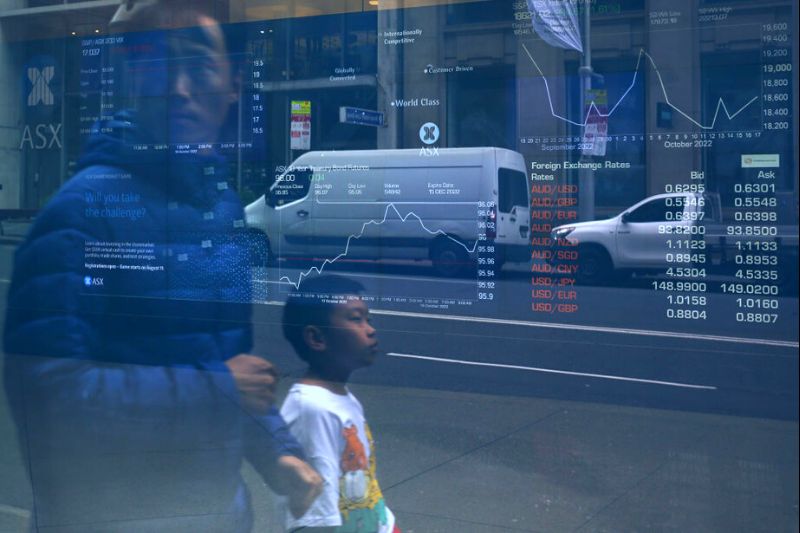If there is one issue which resonates with most Australians today, it is that of the cost of living. Australian households are feeling the financial pressure with what appears to be a relentless march of cost increases for the very basic of needs: housing, food and energy.

The latest monthly Consumer Price Index (CPI) indicator rose 5.6 per cent in the 12 months to May 2023, still some two to three percentage points above the Reserve Bank of Australia’s (RBA) target rate, despite 12 interest rate rises since May 2022. We appear to have put all of the inflation fighting eggs into the RBA’s monetary basket, hoping that through the stewardship of interest rate movements the RBA governor, Philip Lowe and his Board will soon bring down inflation and get our economy back on track.
The RBA is doing much of the heavy lifting in dealing with our current high rate of inflation. This overreliance on the RBA is a weakness in our political and economic systems. The basic problem with the strategy is that the RBA has only one lever in its tool kit and that is to ratchet up interest rates in order to slow down the economy and therefore reduce inflation. This is a tool without nuance, designed to impact the entire economy rather than the specific drivers of inflation. It has no regard for the negative social consequences it wreaks on society in the pursuit of lower inflation.
There has been much debate about the causes of Australia’s current high inflation. Supply chain issues post the pandemic and the war in the Ukraine have been commonly cited as the major drivers of our current cost of living issues and inflation. There are however other factors which must also be considered.
One of the key reasons the RBA has pushed hard on interest rates has to do with concerns about a possible wage inflation spiral.
So sensitive is the RBA to this issue, that economists have warned that the current low rate of unemployment could spark further interest rate increases. In a recent speech Michele Bullock, Deputy Governor of the RBA suggested that Australia’s unemployment rate will need to rise from its current low rates before we will see the RBA’s target inflation rate of between 2-3 per cent achieved. What the Deputy Governor is saying is that more people need to lose their jobs and remain out of work in order to bring down inflation. It will be interesting to see if any RBA officials, business leaders or economists will voluntarily sacrifice their jobs in order for the RBA to meet its inflation target.
'Giving the Government permission to temporarily increase taxes and superannuation contributions would offer the RBA an alternative to increasing interest rates. In doing so it mitigates some of the risks to the economy which has become over reliant on interest rate rises to dampen inflation.'
What has been less of a focus by economists is the role of price gouging and profiteering by business on the rate of inflation. Richard Dennis, chief economist of the Australia Institute has been the exception, suggesting that company profiteering is the biggest driver of Australia’s current inflation problem. And it would appear that he is right.
In a recent OECD report, it suggests that over the latest five quarters (to end-2022), higher unit profits accounted for an average of 51per cent of the year-over-year increase in the GDP deflator, while higher unit labour costs accounted for only 21per cent. While the Labour’s share of total price rises has grown, reaching 37 per cent by the last quarter of 2022 – it is still smaller than the 48 per cent added in that quarter by higher profits. In other words, around half of the inflation growth in Australia can be put down to business profiteering.
In reality governments need to become more active in bringing down inflation. The traditional way in which the government can act is to withdraw demand from the economy by cutting government expenditure. They could also choose to dampen demand by increasing taxes on businesses and individuals to restrict private consumption and to pay for the inevitable increases in welfare payments and programs which will soon be needed as the economy slows.
Alternatively, the government might look to policy measures such as a temporary lift in the compulsory superannuation rate, so that income which would be used to purchase goods and services would instead shift to private superannuation savings. Such a proposal will not come without criticism, particularly from the beneficiaries of the current system. But for the average worker, the idea of restricting one’s take-home pay through a temporary lift in superannuation contributions will sit more favourably than the ever-increasing mortgage repayments to the banks.
Of course, governments could also focus their attention on anti-competitive behaviour and price gouging by businesses, bringing those to account who would seek to exploit Australian households in these difficult times.
What all these measures have in common is leadership. Leadership from our politicians and from the heads of our business, financial and regulatory institutions. Giving the Government permission to temporarily increase taxes and superannuation contributions would offer the RBA an alternative to increasing interest rates. In doing so it mitigates some of the risks to the economy which has become over reliant on interest rate rises to dampen inflation.
When it comes to our economy, it works until it doesn’t, and when it doesn’t it is often the poor and middle classes that bear the brunt of the breakdown.
Joe Zabar is the Chair of Mercy Works Ltd and a Visiting Fellow with the Tax and Transfer Policy Institute, ANU.
Main image: Pedestrians are reflected in a window as electronic boards display stock information at the Australian Securities Exchange. (Lisa Maree Williams/Getty Images)